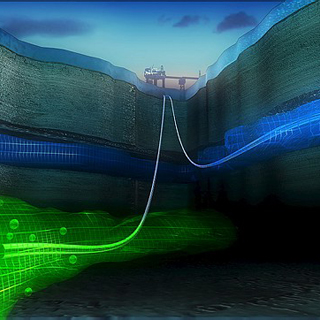Effect of Impurities in Subsurface Storage of CO2 in Depleted Reservoir | Panteha Bolourinejad
PhD student: Panteha Bolourinejad
Supervisor:
Prof. M.A. (Rien) Herber, Geo-Energy
Subsurface storage of carbon dioxide (CO2) in depleted gas reservoir is one of the ways to mitigate the atmospheric CO2 concentration. An important aspect of CO2 storage is the purity of the CO2 product: Depending on the source, a CO2 product stream will contain contaminants (e.g. NOx, CO, SOx, H2S), which may cause unwanted effects during storage. Requirements for CO2 purity will impact the degree of purification, and thereby the costs for CO2 separation.

In this research the short- and long-term effects of impurities in subsurface storage of CO2 in the gas fields of NE Netherlands are studied. The reservoir of these fields is Permian Rotliegend sandstones at the depth of 2500 - 4000 m which are overlain by impermeable layers of caprock (anhydritwe, carbonate and salt).
A long-term laboratory experiment under high pressure / temperature is carried out on reservoir and caprock samples. These samples are in contact with brine (with identical composition as obtained from well data), methane (2%), CO2 with impurities (98%) for one month. The mineralogy of the samples is studied with X-ray diffraction, scanning electron microscope (SEM) and optical microscope. In addition, the permeability of the samples is measured. Hence, the variation in mineralogy and permeability of the samples after the experiment is obtained.
Numerical simulation is additionally done to predict the behaviour of CO2 and impurities in the storage sites. Also, mineral dissolution and / or precipitation cn be predicted by modelling. Finally, these two sections are compared to assess the accuracy of results, obtained from modelling.
| Last modified: | 13 October 2021 4.41 p.m. |
